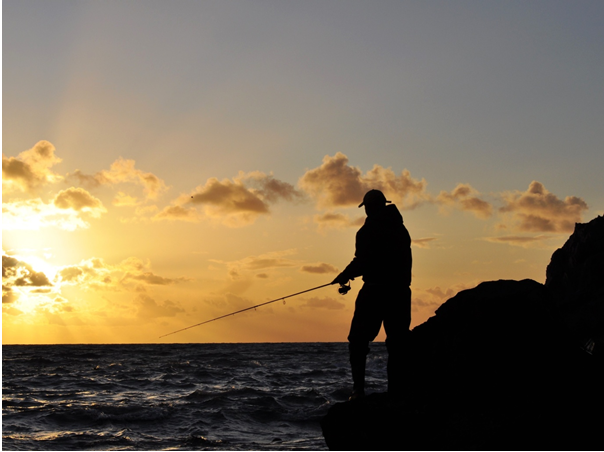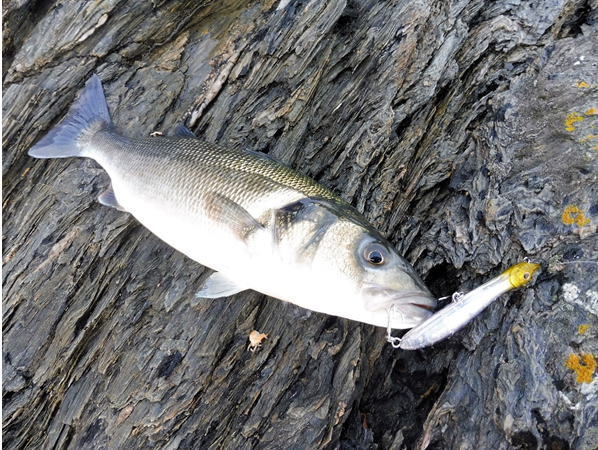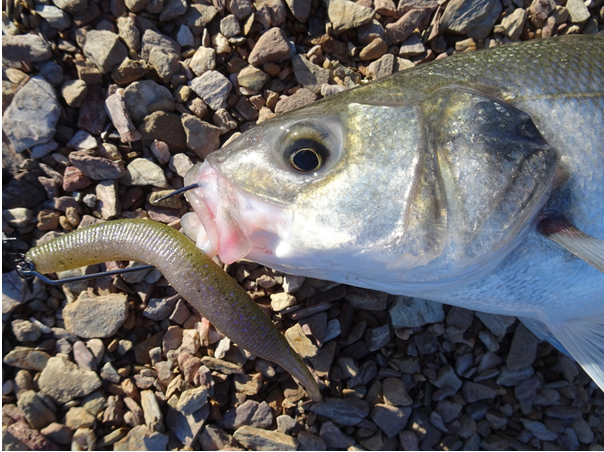Tidal Range – How recording it can help you catch more bass (Part 3 of 3)
Posted by By Marc Cowling (South Devon Bass Guide) on 12th Mar 2019

In Part 3 of this series I will explain some of my experiences and add examples, from personal and guided sessions, where bass lure choice based on the depth of the water on a neap tide, a moderate level tide and a very high spring tide has, I believe, made the difference between a blank and a memorable session(s).
The neap tides
As discussed earlier in this series, the overall level that the water needs to rise on a neap tide is significantly less than that of a ‘spring’ but over the same period of time. Further, taking you back to my ‘fill up a bath’ notion from Part 1 (whereby if you have two minutes to fill a bath to a level of two centimetres, and then you have the same amount of time to fill a bath up to a depth of four centimetres - then clearly you will have to increase the flow of water significantly to achieve this) then the overall velocity of the flow or current becomes comparatively greater as the tidal range increases.
For me, neap tides in the calm sea conditions that I fish at night have, overall, produced more bass than spring tides – is there a possible explanation for this? Maybe... In conjunction with the theory as to why certain sections of reef (rocks/weed, etc) covered by shallow water will only see bass resident in darkness (the additional cover provided by the reduced light levels) is that the vast majority of these zones (my marks) are subjected to or exposed to substantial amounts of current. However, what I believe, is that alongside bass feeling safer to venture into these areas at night, the less vigorous current encourages the ‘bass food’ such as small fish, crabs, shrimps, cuttlefish and squid to hunt in these regions also attracts the bass...

A chunky bass caught in very shallow water covering very weedy, rocky ground (at night) on a white senko.
In regards to lure choice over these types of mark and the ‘neap’ tidal conditions, I will always commence a session or ask my client(s) to attach the most subtle lure in the box - which is generally a weightless, weedless, 5” senko (Wave Worm Bamboo Stick) rigged onto a 5/0 weedless hook (Owner Gary Yamamoto Spec) followed by an Albie Snax rigged onto 6/0 Owner Twistlock Strong if the bass aren’t hitting the senkos.
The medium range tide
A great example of one of my marks that only ‘fishes’ on a medium range tide is one that is within close proximity to a rather grand plinth of headland. Here, there is a series of car-sized underwater rocks that are just about exposed on the very lowest tides. The swells here can be unpredictable to say the least, and a very long cast (60m+) is required to reach the ‘hot zone’- all of which forms part of the reason why, so far, only three lures have proved to be successful.
The lures in question are the medium/large surface sliders the Xorus Patchinko II, Patchinko 125 and Tackle House Vulture. Yes, there are sinking lures (Savage Gear Line Thru Sandeel) and metals that could be propelled far enough also, however, when this has been attempted it is extremely difficult not to lose lure after lure. Moreover, from a bass catching perspective (and not just because I won’t lose them), a surface lure actually serves a very important purpose due to the way the bass are positioned in relation to the strength of the tide and the rock formations themselves.
Judging by precisely ‘where’ the bass are swirling and attacking the lure (only on these medium range tides remember) that the fish are positioning themselves on the side of these rocks that is exposed to the tide/current, whereby they are effectively waiting for food items (disoriented sandeels/fry perhaps) to be carried towards them. No other lure type can be presented to the bass in this way either as from the shoreline, you are required to effectively cast over the top of these rocks, meaning any sub-surface lure would inevitably snag on them.

When distance is required, few lures are as effective as the Xorus Patchinko 125 and II respectively.
The more I have learnt and experienced whilst bass lure fishing, the more I have come to realise that preempting their exact location in relation to the underwater topography is so important. The fact that the bass probably can’t position here when the tide is too fierce (on spring tides with a greater tidal range) or that it probably isn’t worth their while on the smaller neap tides (as the immature fish aren’t corralled in the same way) could be the reason why these medium range tides are the ones that produce bass...
The spring tides
In my recently released book ‘The Lure of The Bass there is a whole chapter dedicated to the movement and behaviour of bass. Within this chapter I describe my experiences of catching bass from venues that there aren’t even covered with water except over the very highest spring tides - I call this ‘Big Tide and Bounty.’
The basic principle is that bass can infiltrate zones, be it certain connecting gullies (patrolling areas) or areas where again ‘bass food’ is collecting by virtue of the higher sea level either washing items out of the higher shoreline (sea slaters, maggots in any rotting seaweed for example)and that are rarely available. Indeed, as bizarre as it sounds, even a barren patch of sand or shingle situated in a secluded cove, covered by 12-18” of water on these monster tides and that is, 90% of the time, trodden by holidaymakers and dog walkers can seemingly act as a magnet to bass - particularly in the slightly more turbulent seas associated to the tides in the this range.
This is when a weedless, weightless soft plastic (a Lunker City Slug-Go or OSP Do Live Stick have worked well for me) by allowing it to drift, waft and slice through the weed fragments literally under the rod tip. This is a very simple tactic, yet it can be devastatingly effective if/when the bass are exploring and/or taking advantage of an easily obtainable, yet short lived ‘bounty.’

A 6” OSP Do Live Stick rigged onto a 5/0 Owner ‘Gary Yamamoto Spec hook - a great bass attracting combination that is also about as ‘weedless’ as it gets.
Marc Cowling is a highly respected shore based guide who specialises in catching, and teaching his clients to catch bass from the shore on lures.
